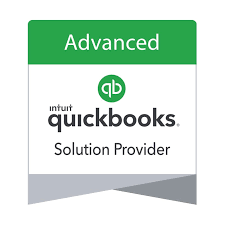|
QuickBooks is listed as one the top 15 Accounting Software Programs
|
|
Project Management 101
|
| Do you? |
| Create Estimates? |
| Use Progress Invoicing? |
| Track time? |
| Charge payroll to jobs? |
| Use subcontractors? |
If so, QuickBooks Enterprise is perfect for you. With the above preferences enabled your job-costing will provide better job cost reporting. Add the following preferences and it’s even better: In the item setup, check this service is performed by a subcontractor,
Estimating may be the most important—and most difficult—part of running a contractor business or managing projects. Creating a detailed, accurate estimate for the job is the first step toward achieving real profitability. Yet too many contractors fail to calculate the true cost of a project; failing to consider fully the three crucial components, Overhead, Risk and Job Costs. Most companies understand the basics of overhead. Consider it as expenses you have to incur when you open the doors and have no projects. (Rent, administrative salaries, insurance, telephone & utilities.) Everyone knows that labor and materials are job costs, but many fail to consider risk. It is recommended that you use a contingency line item, so you can measure your true costs against the estimates. The mathematical difference between the cost estimate and the bid is a total of overhead and profit. Furthermore, earnings are driven by the percentage of actual costs to budgeted costs with that percentage applied to the budgeted Contract Price plus or minus internal change orders. Think percentage of completion. Actual cost to estimated cost. Completed cost may be great for tax reporting purposes, but you can’t run a successful company without the information about the job progress. The job reports should be reviewed frequently by the owner and chief estimator/project manager frequently.
Set up your items to optimize job costing. The Construction Industry has a variety of cost codes suggested for you to consider as you build out your system.
There are many ways to examine Construction Job Cost Codes.
Items are Cost Codes in QuickBooks. Spend time brainstorming and developing your item or cost code list. Contractors have the CSI Cost Codes (Construction Specification Institute).[1] NARI (National Association of Remodelers Institute) has a separate set for their industry codes and the NAHB (National Association of Home Builders) have theirs[2]. Or you can build or develop your own designed around how your business operates. [3] Talk to the Estimator when setting up your cost codes. A general rule of thumb is to use items for job costs and expenses for overhead. When you look at a bill or a check, you will see tabs for each of these. And don’t forget to set up an item for Retainage.
Using cost codes provide a great way of understanding where and why the company is making/losing money easily. Yes, more codes can be added especially for the specialty contractors. But, at the end of the day, it all still boils down how the construction work was estimated, and then, did the company make/lose money for their type of work? If you are required to use costing/reporting, phases or other industry codes, brainstorm how you want your costing items to be presented and upload them into QuickBooks Enterprise from an excel file.
Quick tips to get started
1. Set up a Customer: Job for each of your jobs. If you have previously recorded transactions to the Customer, QuickBooks Desktop moves those transactions into Job 1 when you create a job. From this point forward, use a descriptive name for each job.
2. Real world examples
§ General contractor; for each customer there is one owner/customer; Jobs are apartment complexes, name is the complex –
§ Plumbing and HVAC company; Customers are real estate management companies, name is the specific property being managed.
§ And now, a scenario for job costing that truly represents thinking outside of the box: The QuickBooks user is a wholesale seafood distributor; in this instance they needed to track purchases. The Vendor and the Customer is the Fishing vessel. (Customer is identified by a * appending the name.) The fishing vessel job is created when the boat leaves after purchasing bait and ice (hence the Customer designation) and job is named FPO Current Voyage and the start date entered. The Boat Owner and Boat Captain along with contract designated distribution percentages are set up as custom fields. When the vessel returns it then is assigned a FPO number (industry standard) and the job renamed to FPO 12345. A purchase order of the same name is created and the purchase order completed with the actual catch brought in. The job is then closed. Resulting reports include the standard job cost reports along with Active trips report and the industry standard Settlement sheet for payouts to Boat Owner. If they can think outside of the box, so can you!
3. Enter your estimates and TALK to your estimator. If you enter estimates, you will be able to use the full range of QuickBooks Job Cost Reports. You can review them on an ongoing basis, make changes as necessary to help you manage jobs and be proactive. Understanding when and why jobs go wrong early are critical to overall job and company profitability. Estimating more accurately can in turn help you make more money from each job and win more jobs in the future.[4]
4. Assign all of your job-related expenses to a job using items. It is easy to complete the Customer: Job category whenever you enter a bill, check or time sheet. Use the items tab as opposed to expense tab.
5. Make sure you select the job, not just the customer when you invoice.
6. Attach Documents to your QuickBooks files, whether it be W-9’s for subcontractors, Proposals, lien releases or other contract related documents.
7. Use the QuickBooks Job Cost reports to learn how your business is doing on a job by job basis. In addition QuickBooks Advanced Reporting enables you to create Work In Progress and Completed Contract Reports for your accountants, bank and bonding company.
8. Customize forms so you have what you need. For example”
§ A Schedule of Values
§ AIA Form
§ Committed Cost (built in)
Job costing in QuickBooks Desktop can help you estimate more accurately. Again, unless you compare your estimated costs to your actual costs after the work is complete, you have no way to know if you are estimating too high or, low, and no way of improving your ability to estimate in the future.
With this article, we have barely scratched the surface of Job Costing for Contractors. There are many more tips, tricks, customizations and ideas. Let us help you brainstorm!
[1] Construction Specification Institutes (CSI) specifications sections are sufficient for management and accounting cost codes. https://secure.spex.ca/siteadmin/freedocuments/images/1.pdf
[2] National Association of Home Builders Cost Codes
[3]If you are an HVAC contractor you probably don’t need the cost codes for finishes, but you will need General Conditions or General Requirements.
[4] Many estimates are prepared in excel and with a little brainstorming can be imported into QuickBooks. In addition, there are Gold Certified Developers who have estimating software that interfaces with QuickBooks. Check marketplace.intuit.com and download a free trial. Most offer a 15-30 day free trial.







